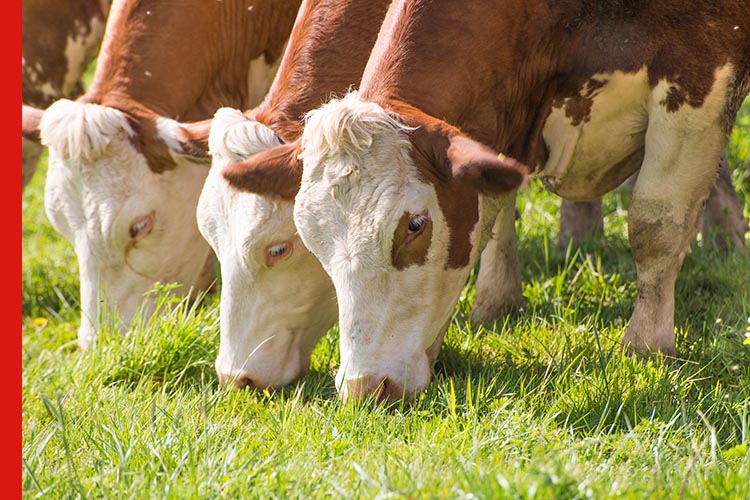
Grass-fed beef, lamb and dairy are increasingly popular with international consumers – giving New Zealand a chance to gain a competitive edge in the market.
Here in Aotearoa, almost all our cattle and sheep live outdoors all year round for their whole lives.
However, in many other countries animals are often taken off grass at around eight months old and moved to restricted feedlots where they eat mainly grains.
Not only do grass-fed animals enjoy a better quality of life, but the meat and milk they produce has additional health benefits. Grass-fed beef and milk are higher in omega-3 fatty acids, lower in fat and higher in several vitamins when compared to grain-fed.
Because New Zealand farmers already raise animals on grass, the industry can turn this into a competitive edge on the international stage.
US consumers are driving demand
“Grass-fed is a small percentage of the market but it’s growing more quickly than grain-fed,” says Hugh Good, Global Market Intelligence and Research Manager at Beef + Lamb New Zealand.
“The grass-fed label is a kind of shorthand for positive health attributes like being antibiotic free and growth hormone free – and customers in the US are prepared to pay a premium for it.”
US consumers are mainly looking for health benefits, but they also like the positive animal welfare story and the environmental upsides attached to the label, he said.
China is the largest market for New Zealand’s beef and lamb, although the grass-fed story has less traction there. Chinese consumers are slightly less aware of grass-fed’s links with health, says Good, but they like New Zealand’s reputation as clean and green – and Fonterra reported earlier this year that grass-fed milk is gaining traction in Vietnam.
Ahead of the world on measuring emissions
One of the perceived benefits of grass-fed is the lower environmental footprint of growing grass compared to growing and processing grain. It’s not yet clear whether grass-fed products have lower total emissions than grain-fed, but the New Zealand agrisector is working towards measuring that, while also researching ways to reduce emissions.
The process hasn’t been without controversy, notes Good, but he says this is another chance to set ourselves apart on the world stage:
“Once we can demonstrate our emissions profile, that’s going to be important for major retailers, especially in the EU. We’re well ahead on this, and we’re doing it more nimbly than other nations – I think we should be really proud of it.”
Although there are costs associated with measuring emissions and growing awareness of the grass-fed advantage, he believes it will pay off. Not only will Kiwi products be ready to capitalise on these consumer trends, but they’ll command a higher price, which is excellent news for our whole economy.
“Customers will be willing to pay a premium for grass-fed products that are low emissions and come from happy, low-stress animals – provided the taste is excellent, which we know it is,” says Good.
“If New Zealand can line up behind those claims, we can improve our profits. All this leads to a really positive picture for the sector.”
